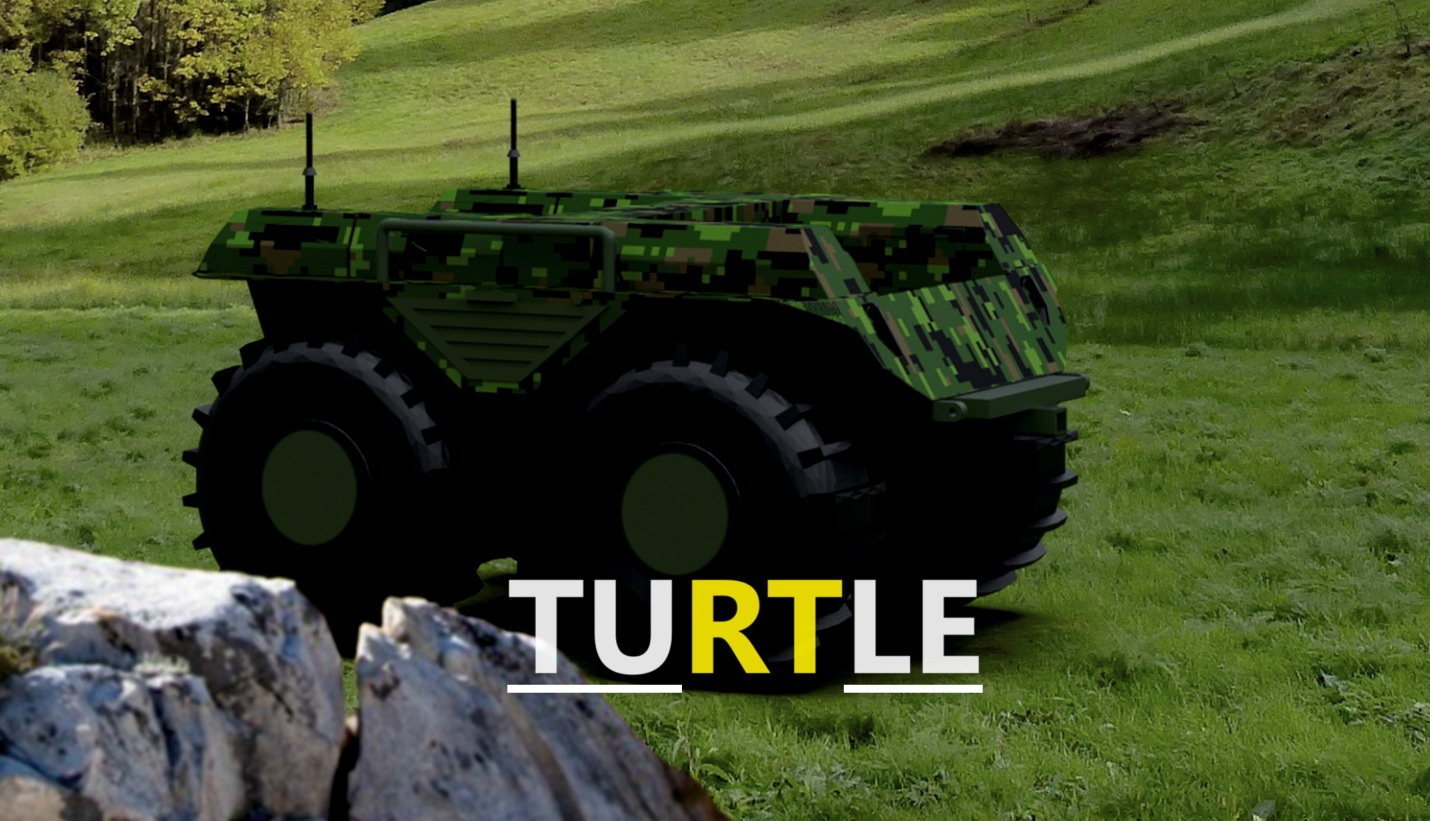In what is being touted as a first in the world, the Russian military seems to have developed and used a robot named ‘Turtle’ to deliver ammunition to troops in the combat zone.
Konstantin Bagdasarov, the CEO of the Russia-based Argo robot developer company, told Russian state media agency RIA Novosti that the “Turtle” was used in the Luhansk People’s Republic, which has been embroiled in warfighting since the invasion began in 2022.
The CEO told reporters, “The prototype of the Turtle robot is now working in the Luhansk People’s Republic on the line of contact in one of the Russian group of troops units. Its main tasks are the delivery of ammunition and food. In particular, the robot delivers mines for mortar crews. The military is satisfied with the development.”
According to Bagdasarov, the robot works at the front and can handle 500 kilograms of load up to five kilometers away. Since the Turtle robot is electric, according to Bagdasarov, it doesn’t make noise or “glow” in the heat spectrum. Its very modest stature, i.e., the body height of approximately one meter, makes it challenging to identify visually.
The manufacturer’s CEO also clarified that the robot was given the working moniker “Turtle” because of its limited speed, as the complex was designed to support foot soldiers. The gadget can travel up to 10 kilometers per hour at its fastest. Bagdasarov also noted that the robot can follow the radio tag that the group of soldiers carries.
The company is developing updated “Turtle” robots designed with combat operations in mind. They have electronic maps of the area, lidars for ground scanning, and satellite communication systems. The new vehicles will be larger and have distinct chassis, wheels, and tracks.

The announcement comes days after a Kremlin-affiliated social media produced footage purporting to show a Russian unmanned ground vehicle, or UGV, carrying supplies to front-line troops while avoiding hits by Ukrainian mini-drones and evacuating a wounded soldier.
Previous reports had indicated that due to a shortage of actual troops, Russia and Ukraine were turning towards “crude ground robots” to fill in the shoes of soldiers in combat. EurAsian Times, however, could not establish the authenticity of these claims.
Russian Tracked UGV Transports Supplies, Wounded; Comes Under Fire from Ukrainian FPV Kamikaze Drones: Video of a small-sized transport unmanned tracked platform used in the Avdeevsky direction by the Russian side. It is said that “in the battles for the Avdeevsk industrial zone,… pic.twitter.com/l8QZJ8k4aY
— EurAsian Times (@THEEURASIATIMES) December 5, 2023
However, after the Kremlin video went viral, Sam Bennett, research analyst at the US-based Center for Naval Analyses think tank explained that since armed aerial drones and artillery were endangering military movements on the front lines in Ukraine, logistical, supply, and evacuation duties ran the risk of being found and targeted. This was essentially why the two sides deployed these “DIY” platforms.
Russia had previously fielded a combat robot named ‘Marker,’ which can automatically recognize and attack pre-designated targets. At one point, Russian officials warned that Marker would be head-on taking the supplied Abrams and Leopard-2 tanks.
Not just that, it has been reported that Russia is testing robots on the battlefield in Ukraine, explicitly deploying the Zubilo robot into the conflict zone. It is a 13.3-ton assault ground vehicle with the capacity to carry a payload of up to 2.7 tons. It is intended to serve as an autonomous transport system.
Zubilo is resilient to explosive device shrapnel and artillery pieces and performs several additional functions, such as ammo distribution, freight transportation, casualty evacuation, and even supplying power for radios and quadcopters.
The war in Ukraine has become a testing ground for novel technology, with autonomous systems gaining widespread prominence. Against this background, the role of artificial intelligence (AI) and autonomous systems in the war in Ukraine is attracting global attention.
Russian Assault On Ukraine Intensifies
In the wee hours of January 13, Ukraine was subjected to a significant Russian missile assault. Once again, the Ukrainian air defenses could shoot down far fewer missiles than is typical of them.
The Ukrainian Air Force reports that Russia fired three drones and 37 missiles. It said in a social media announcement that eight missiles had been shot down.
“It should be noted that more than 20 of all the listed (weapons) which were not included in the number of the downed, did not reach their targets due to active countermeasures by electronic warfare,” the statement said.
The Air Force stated that highly fast-moving ballistic missiles comprised most of the missile types used overnight. Due to their trajectory, these missiles are much more difficult to shoot down than cruise missiles. The attacks come amid concerns that Ukraine was now experiencing a shortage of air defense missiles.
In what appears to be a repeat of Russian tactics from last winter when it obliterated Ukrainian energy infrastructure, Moscow’s forces have trained their guns on Ukraine’s military-industrial complex. Perhaps, with a significant cost!
Some unverified reports have hinted that the Kremlin spent a whopping US$239 million on the aerial attacks between January 12 and 13.
The constant aerial strikes have caused panic within Kyiv’s administration, with President Zelensky pleading with his partners in NATO for additional air defense systems and outrightly rejecting a supposed ceasefire.
- Contact the author at sakshi.tiwari9555(at)gmail.com
- Follow EurAsian Times on Google News